|
|
|||
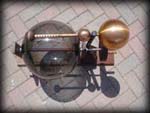 |
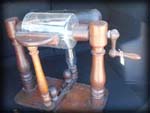 |
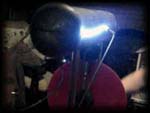 |
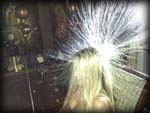 |
| "...Electricity,
containing as it were, all within its power, alone exhibits the effects
of many sciences, combined together different powers, and, by striking
the senses in a particular and surprising manner, affords pleasure, and
is of use to the ignorant as well as the philosopher, the rich as well
as the poor. In Electricity, we are pleased with beholding its
penetrating light, exhibited in numberless different forms; we admire
its attraction and repulsion, acting upon every kind of body; we are
surprised by the shock, terrified by the explosion and force of its
battery; but when we consider and examine it as the cause of thunder,
lightning, aurora borealis, and other appearances of nature, whose
direful effects we can in part imitate, explain, and even avert, we are
then involved in a maze, that leaves nothing to contemplate but the
inexpressible and permanent idea of admiration and wonder.". Tiberius Cavallo, A Complete Treatise On Electricity, 1795 "THE electrical effluvia is far more subtile than air, is diffused through all space, surrounds the earth, and pervades every part of it; and such is the extreme fineness, velocity and expansiveness of this active principle, that all other matter seems to be only the body, and this the soul of the universe.". T. Gale, Electricity or Ethereal Fire Considered, 1802 Static Electricity has captivated humans since the beginning of time. The practice of actually capturing and harnessing its power only began in the late 1600s by Otto von Guericke. In 1705 Francis Haukesbee produced artificial light with electricity and paved the way for this new field to become not only entertaining but useful and practical for everyday purposes... |
|||
|
|
|||
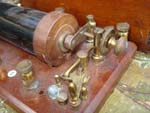 |
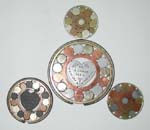 |
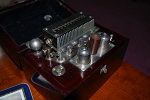 |
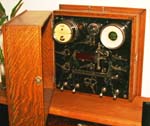 |
| "IN examining the
progress of almost any branch of human knowledge, curiosity must meet
with many repulses. By the time the attention of society is attracted to
the accumulation of detached truths, which compose a science, it is
often impossible to retrace its history. The real origin of most
discoveries is obscured by antiquity, their authors have already sunk
into oblivion, and important improvements are ascribed to different
inventors...Electricity is however oppressed by few of these
difficulties. With the exception of some small discoveries mentioned by
ancient authors, this science derives its origin and all its
improvements from the two last centuries." Jacob Green, An Epitome of Electricity and Galvanism, 1809 Galvanism was the use of batteries or "voltaic piles" to produce electric currents to be applied to the body. This was often done ornamentally (such as galvanic jewelry) or by gigantic banks of glass jars interconnected. The currents were used for both chemical and electrical effects on the body. Faradism was the application of an interrupted current generated from one or more batteries and an electrical coil with a circuit breaker. This apparatus produced intense muscle contractions and shocks. |
|||
|
|
|||
 |
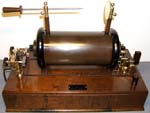 |
 |
 |
| "Electricity is
often called wonderful, beautiful; but it is so only in common with the
other forces of nature. The beauty of electricity or of any other force
is not that the power is mysterious, and unexpected, touching every
sense at unawares in turn, but that it is under law, and that the taught
intellect can even now govern it largely. The human mind is placed
above, and not beneath it, and it is in such a point of view that the
mental education afforded by science is rendered super-eminent in
dignity, in practical application and utility; for by enabling the mind
to apply the natural power through law, it conveys the gifts of God to
man." Michael Faraday Induction Coils were the first type of electrical transformer, and when operated by an interrupted current from a battery produced violent shocks and long sparks in the air. They became a practical power supply for X-Rays in the late 1800s and were pivotal tools in the early experimental days of radio and wireless telegraphy. |
|||
X-Rays |
|||
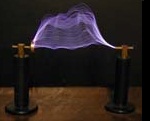 |
 |
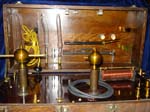 |
 |
| "I was working with
a Crookes tube covered by a shield of black cardboard. A piece of barium
platino-cyanide paper lay on the bench there. I had been passing a
current through the tube, and I noticed a peculiar black line across the
paper. The effect was one which could only be produced in ordinary
parlance by the passage of light. No light could come from the tube
because the shield which covered it was impervious to any light known
even that of the electric arc...I did not think I investigated...I
assumed that the effect must have come from the tube since its character
indicated that it could come from nowhere else. It seemed at first
a new kind of invisible light. It was clearly something new something
unrecorded... There is much to do, and I am busy, very busy."
Wilhelm Konrad Röntgen, On his discovery of the X-Ray Fewer discoveries have ever captivated people around the world as that of the X-Ray. In a time when messages could be sent without wires, light bulbs lit with no visible power source, well, anything seemed possible in the 1890s...and seeing the invisible was the most exciting thing ever dreamed for many. |
|||
Crookes & Geissler Tubes |
|||
 |
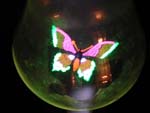 |
 |
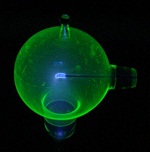 |
| "When we look at
the world around us, on Nature, we are impressed with its beauty and
grandeur. Each thing we perceive, though it may be vanishingly small, is
in itself a world, that is, like the whole of the universe, matter and
force governed by law,—a world, the contemplation of which fills us
with feelings of wonder and irresistibly urges us to ceaseless thought
and inquiry. But in all this vast world, of all objects our senses
reveal to us, the most marvelous, the most appealing to our imagination,
appears no doubt a highly developed organism, a thinking being...Of all
our organs, it is the one, which is in the most intimate relation with
that which we call intellect. So intimate is this relation, that it is
often said, the very soul shows itself in the eye." Nikola Tesla, On Light And Other High Frequency Phenomena, 1893 |
|||
Diathermy |
|||
 |
 |
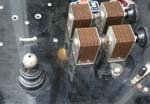 |
 |
| Diathermy is when high
frequency currents are used to heat, cut, coagulate, and destroy
tissues. Diathermy Machines were used to lower blood pressure
electrically before medications were available. When used
surgically, they were most beneficial in the removal of cancerous cysts.
Unlike the scalpel, where excessive bleeding occurred (and
re-infecting good tissues with bad cancer cells) electrical cutting of
tissues allowed the blood vessels to be sealed as they were cut...cysts
could be cooked in a sense before removed, and all in all the procedures
had an overall success rate that was higher and with a speedier
recovery. Today they are replaced with lasers, and although they
look straight out of Frankenstein were actually legitimate medical tools
in the 1920s, even if occasionally they were pawned off by quacks ;) ... Oudin Resonators were large Tesla Coils used to apply sparks to the skin and diffuse electricity to produce physiological effects on the body. |
|||
"Violet Rays" |
|||
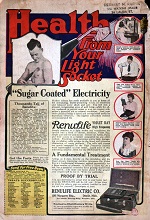 |
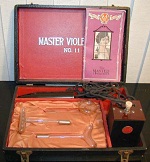 |
 |
  |
| "Violet Ray"
Machines were portable handheld Tesla Coils that applied sparks to the
skin diffused through glass electrodes. These electrodes were made
to conform to every conceivable body part to "cure" virtually
every known disease... originally they were sold for legitimate reasons,
mainly treating minor skin conditions (such as acne), but as they grew
popularity so grew the extravagant claims...which eventually led to the
FDA seizing countless devices and companies being put on trial. Today the machines are still sold for their original intent to aestheticians and beauticians and remain one of the most popular medical collectibles. They are also gaining popularity worldwide in the fetish markets as unusual and provocative "sex toys". These device prove that history is stranger is fiction... |
|||
Phototherapy & Ultraviolet Radiation |
|||
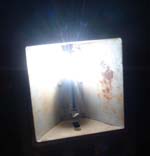 |
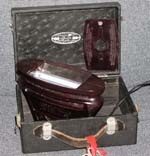 |
 |
 |
| "Carbon Arc" lamps were
the first commercial electric light source, and are still considered the
most efficient source of true white light. The are virtually a sustained welding arc in open air that produces an intense blinding light across the entire visible spectrum. "Ultra-Violet Quartz Irradiation" lamps were early forms of sunlamps with intense germicidal properties. Most also generated copious amounts of ozone in addition to ultraviolet radiation. "Phototherapy" was a field that used light and UV radiation to treat diseases. It was pioneered by Danish physician Niels Finsen in his groundbreaking work with lupus cases. Over the years it was unfortunately reduced to various shades of quackery with semi-bogus (but amusing) "colored light" therapy machines. |
|||
Quackery |
|||
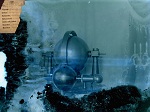 |
 |
 |
|
| "There's one born every minute..." And the hundreds of quackery devices produced over the centuries proves it... | |||
| High Voltage Engineering | |||
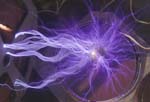 |
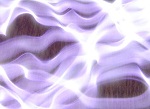 |
 |
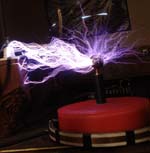 |
| Corona Discharges | |||
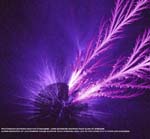 |
 |
 |
 |
| Historic 3D CADs | |||
 |
 |
 |
 |
| Materials & Mechanical Engineering | |||
 |
 |
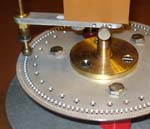 |
 |
| Historical Replicas | |||
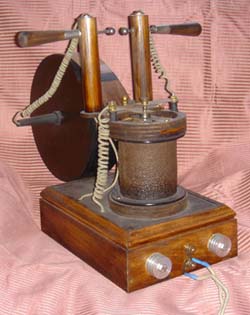 |
 |
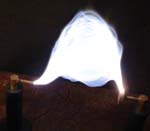 |
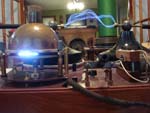 |